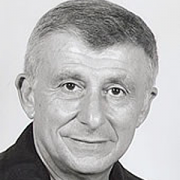I grew up in an Italian neighborhood in Brooklyn , New York , that bordered on a large Hasidic community. At Xavier High School in Manhattan (run by the Jesuits and the US Army!) I was able to enroll in the Greek Honors curriculum (lots of Latin, Greek, and French with a minimum of science) which was “designed for students interested in becoming either a priest or a physician.” I then attended Columbia University where I was fortunate to study with Margaret Mead. I still have a copy of her final exam, which contained only one item: Ask yourself a question based on what you have learned in the class, and then answer it. I wrote about Balinese death rituals and received a B+ which was pretty good, considering it was a graduate anthropology course. While at Columbia , I was editor of Jester (which was much better than the Harvard Lampoon) and founded The National Pre-Medical Journal which was circulated to every pre-med student in the nation.
At Columbia I read a lot about people called Protestants, but I never really met any, so I went to medical school at the University of Virginia . There I discovered that some Protestants were really nice people and some weren’t. I became friends with the Dept of Psychiatry Chairman, Ian Stevenson, whose major interest was reincarnation, and with Wilfred Abse, a psychoanalyst. I published two papers, as well as a chapter on Fellini, the Italian film maker, in the book Man and the Movies.
My residency in psychiatry was at the University of Michigan , which was a heavily psychoanalytic program. Hard to believe but I got into trouble by allying myself with the vibrant emerging community mental health faculty and even received my MPH degree in community mental health, under the tutelage of Tsung-Yi Lin and Phil Margolis. Some of the psychoanalytic faculty were enraged when I wrote my first book; Guide For Mental Health Workers (published by the U of Michigan press) because they had never published a book. Live and learn. I also published four papers.
Then I went to Oakland ( California ) Naval Hospital for my mandatory two years of active military duty. My peer group was quite remarkable; all five became psychiatry professors and two went on to become medical school deans.
In 1971 I took the American Board of Psychiatry and Neurology exams in St. Louis and interviewed for a faculty job at several universities on my way back home. At the first stop, the University of Missouri-Columbia, I met with the Chairman, James Weiss. We both got drunk and smoked Cuban cigars. Jim offered me a job at the Associate Professor level if I would publish six good papers. I successfully completed this task and have been at Missouri ever since.
At the University of Missouri-Columbia, I took over editorship of the Journal of Operational Psychiatry, which was little more than a thin, in-house publication. I soon turned it into the most widely circulated (40,000) psychiatric journal in the world and published a lot of cultural psychiatry articles, my favorite being “Sobriety in Black Hebrews.” The Journal had a ten year run.
In 1978 I published the cover article “Foundations of Cultural Psychiatry,” in the American Journal of Psychiatry. It helped to solidify cultural psychiatry as a bona fide academic area as opposed to the semi-exotic, mainly single-case and touristy “transcultural psychiatry.” It also brought together a lot of colleagues; together we had a symposium on cultural psychiatry in 1979 at the APA meeting. Previously, in 1977, Ed Foulks, Joe Westermeyer, Ron Wintrob and I edited Current Perspectives in Cultural Psychiatry. This group, along with John Spiegel, co-founded the Society for the Study of Psychiatry and Culture.
Margaret Mead died in 1978 and I was asked to write the chapter she was working on for The Comprehensive Textbook of Psychiatry. I wrote the chapter for both the 1980 and 1985 editions and was promoted to Professor of Psychiatry at Univ Missouri . Since the CTP rotates authors, I just published the chapter, now titled “Cultural Psychiatry,” for the 2005 edition.
In 1987 I wrote Bodies Under Siege: Self-Mutilation in Culture and Psychiatry (a 2nd edition in 1996 still sells 1000 copies a year) which was the first book to utilize what I call the “cultural psychiatric approach” to understand a problematic behavior. In this approach I examine the biological, psychological, and social factors that contribute to the behavior and examine these factors through the overarching web of culture. I have lectured on this topic more than 300 times, including at a large number of the medical schools in the USA and Canada , and continue to make numerous radio, television, and print media presentations on the subject.
Starting in the early 1990s I turned my attention to religion and spirituality, although in 1982 I published another cover article in the American Journal of Psychiatry titled “Modern Christian Healing of Mental Illness.” My book,PsychoBible: Behavior, Religion, and the Holy Book came out in 2004 and is already in its second printing. It received the Creative Scholarship Award from the Society for the Study of Psychiatry and Culture and I was especially pleased that David Kinzie, Goffredo Bartocci, Ezra Griffith and many others regarded my magnum opus so favorably.
I am heavily engaged in patient care and teaching cultural psychiatry at my university. Since it took me 10 years to write my best books, I hope to live long enough to complete another one. The topic is uncertain, but I hope it would be a Falstaffian send-off to a rewarding career. Reviewers have been kind enough to call Bodies Under Siegeand PsychoBible “classics.” God only knows what they will call my next project.
January 23, 2008

